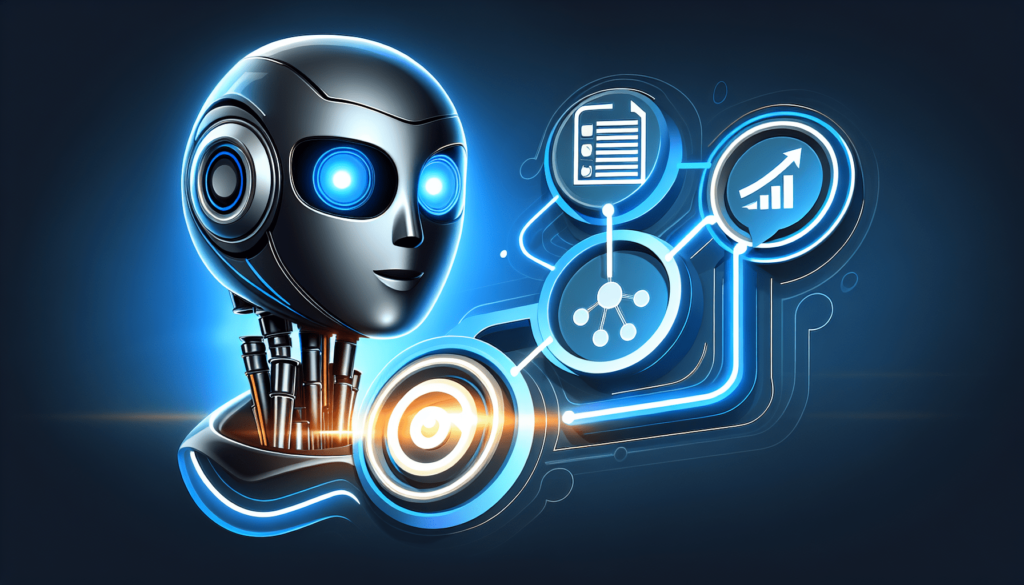Welcome to a comprehensive guide on integrating chatbots with CRM systems to take your home service business to the next level! In this article, you will learn the benefits of incorporating chatbots into your customer relationship management process, such as improved response times, personalized interactions, and streamlined customer support. Discover how you can leverage this technology to enhance customer satisfaction and boost efficiencies in your home service operations. Let’s dive in and revolutionize the way you manage customer relationships! How to Integrate Chatbots with Your CRM System for Improved Customer Management in Home Service Businesses
Have you ever considered leveraging chatbots to enhance customer management in your home service business? Integrating chatbots with your CRM (Customer Relationship Management) system can streamline communication, increase efficiency, and provide a seamless customer experience. In this article, we will guide you through the process of integrating chatbots into your CRM system to optimize customer management in home service businesses.

Why Integrate Chatbots with Your CRM System?
Chatbots have revolutionized the way businesses interact with customers by providing instant responses, personalized recommendations, and round-the-clock support. By integrating chatbots with your CRM system, you can centralize customer data, automate repetitive tasks, and deliver a more personalized experience to your clients. This integration allows you to track customer interactions, identify trends, and make data-driven decisions to improve your services.
Let’s Chat about Chatbots
Imagine having a virtual assistant that can engage with your customers, answer their inquiries, schedule appointments, and even upsell your services. Chatbots are AI-powered tools that can simulate human conversation through text or voice interactions. These intelligent assistants can understand natural language, learn from past interactions, and provide relevant information to customers in real-time. By integrating chatbots with your CRM system, you can capture leads, qualify prospects, and drive conversions without human intervention.
Benefits of Integrating Chatbots with CRM System
Integrating chatbots with your CRM system offers a wide range of benefits for your home service business. From improving customer satisfaction to increasing operational efficiency, here are some of the key advantages of this integration:
Improved Customer Engagements
Chatbots can engage with customers instantly, provide personalized recommendations, and resolve issues promptly. By integrating chatbots with your CRM system, you can access customer data in real-time, analyze customer preferences, and tailor your responses to meet their needs. This personalized approach can lead to higher customer satisfaction, increased loyalty, and repeat business.
Enhanced Lead Generation
Chatbots can qualify leads, capture contact information, and schedule appointments with potential customers. By integrating chatbots with your CRM system, you can track lead sources, monitor lead status, and nurture leads through targeted campaigns. This integration allows you to convert more leads into customers, increase revenue, and grow your business effectively.
Streamlined Appointment Scheduling
Chatbots can streamline the appointment scheduling process by checking availability, booking appointments, and sending reminders to customers. By integrating chatbots with your CRM system, you can synchronize calendar events, manage service requests, and optimize your scheduling workflow. This integration ensures that you never miss an appointment, reduce no-shows, and improve operational efficiency.
24/7 Customer Support
Chatbots can provide round-the-clock customer support, answer FAQs, and resolve common issues outside of business hours. By integrating chatbots with your CRM system, you can automate customer inquiries, route tickets to the right department, and escalate urgent requests to human agents. This integration enables you to provide consistent support, reduce customer wait times, and deliver exceptional service at any time of the day.
Data-Driven Decision Making
Chatbots can collect valuable data on customer interactions, behavior patterns, and preferences. By integrating chatbots with your CRM system, you can analyze this data, create detailed reports, and gain actionable insights into your customer base. This integration allows you to make informed decisions, identify areas for improvement, and drive continuous innovation in your home service business.

Steps to Integrate Chatbots with CRM System
Now that you understand the benefits of integrating chatbots with your CRM system, let’s explore the steps involved in this process. Follow these guidelines to seamlessly integrate chatbots into your CRM system and optimize customer management in your home service business:
Step 1: Choose the Right Chatbot Platform
Before integrating chatbots with your CRM system, you need to select the right chatbot platform that meets your business requirements. Consider factors such as chatbot capabilities, integration options, scalability, and pricing when choosing a chatbot platform. Some popular chatbot platforms for home service businesses include Chatfuel, ManyChat, and MobileMonkey.
Step 2: Define Chatbot Objectives and Use Cases
Identify your chatbot objectives and use cases to determine how chatbots can enhance customer management in your home service business. Consider tasks such as lead generation, appointment scheduling, customer support, and service requests that chatbots can automate. Define clear objectives, goals, and success metrics for your chatbot integration project to ensure its effectiveness.
Step 3: Integrate Chatbots with CRM System
Integrate chatbots with your CRM system using APIs, webhooks, or third-party integrations. Connect your chatbot platform with your CRM software to exchange data, trigger actions, and synchronize information between the two systems. Make sure that your chatbots can access customer data, update CRM records, and communicate with your CRM system seamlessly.
Step 4: Customize Chatbot Responses and Workflows
Personalize chatbot responses, workflows, and interactions to align with your brand voice and customer expectations. Create chatbot scripts, dialogues, and scenarios that resonate with your target audience and address their needs effectively. Tailor chatbot conversations to provide relevant information, recommend services, and guide users through the customer journey.
Step 5: Test and Optimize Chatbot Performance
Test your chatbots thoroughly to ensure that they function correctly, respond accurately, and deliver a positive user experience. Conduct user testing, A/B testing, and performance monitoring to identify any issues, bugs, or bottlenecks in your chatbot system. Optimize chatbot performance, refine chatbot workflows, and incorporate user feedback to improve the overall effectiveness of your chatbot integration.
Step 6: Monitor and Analyze Chatbot Metrics
Track key chatbot metrics, such as engagement rate, conversion rate, response time, and customer satisfaction, to measure the impact of your chatbot integration on customer management. Monitor chatbot performance, analyze user behavior, and generate reports to evaluate the success of your chatbot implementation. Use data-driven insights to make informed decisions, refine your chatbot strategy, and maximize the ROI of your chatbot integration.

Best Practices for Chatbot Integration with CRM System
To ensure a successful integration of chatbots with your CRM system, follow these best practices to optimize customer management in your home service business:
Define Clear Objectives and KPIs
Set clear objectives, goals, and key performance indicators (KPIs) for your chatbot integration project to measure its effectiveness and impact on customer management. Define success metrics, track relevant KPIs, and align your chatbot strategy with your business objectives to drive meaningful results.
Provide Training and Support for Chatbot Users
Train your employees, customer service agents, and chatbot users on how to interact with chatbots, troubleshoot issues, and escalate requests to human agents when necessary. Provide ongoing training, resources, and support for chatbot users to ensure that they can leverage chatbot capabilities effectively to enhance customer management in your home service business.
Optimize Chatbot UX and UI Design
Design chatbot interfaces, menus, and dialogues that are intuitive, user-friendly, and visually appealing to provide a seamless user experience for your customers. Use conversational design principles, interactive elements, and multimedia content to engage users, guide them through chatbot interactions, and enhance the overall usability of your chatbot system.
Implement Multichannel Chatbot Communication
Integrate chatbots with various communication channels, such as website chatbots, social media chatbots, and messaging apps, to reach a wider audience and engage with customers on their preferred platforms. Implement multichannel chatbot communication to provide seamless omnichannel experiences, foster customer loyalty, and drive customer engagement across different touchpoints.
Leverage Chatbot Analytics and Insights
Utilize chatbot analytics, reporting tools, and dashboards to monitor chatbot performance, analyze user behavior, and derive actionable insights from chatbot interactions. Leverage chatbot analytics and insights to identify trends, optimize chatbot workflows, and make data-driven decisions to improve customer management in your home service business.

Conclusion
Integrating chatbots with your CRM system can transform customer management in your home service business by automating tasks, personalizing interactions, and enhancing the overall customer experience. By following the steps outlined in this article and implementing best practices for chatbot integration, you can optimize customer engagements, streamline operations, and drive business growth effectively. Embrace the power of chatbots in your CRM system to deliver exceptional service, build long-lasting relationships with customers, and stay ahead of the competition in the home service industry.

